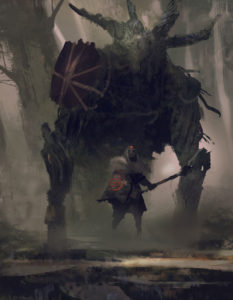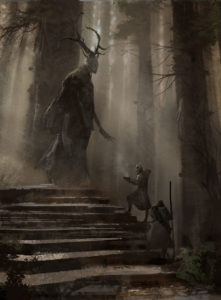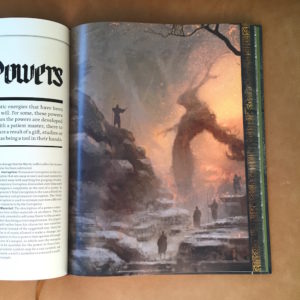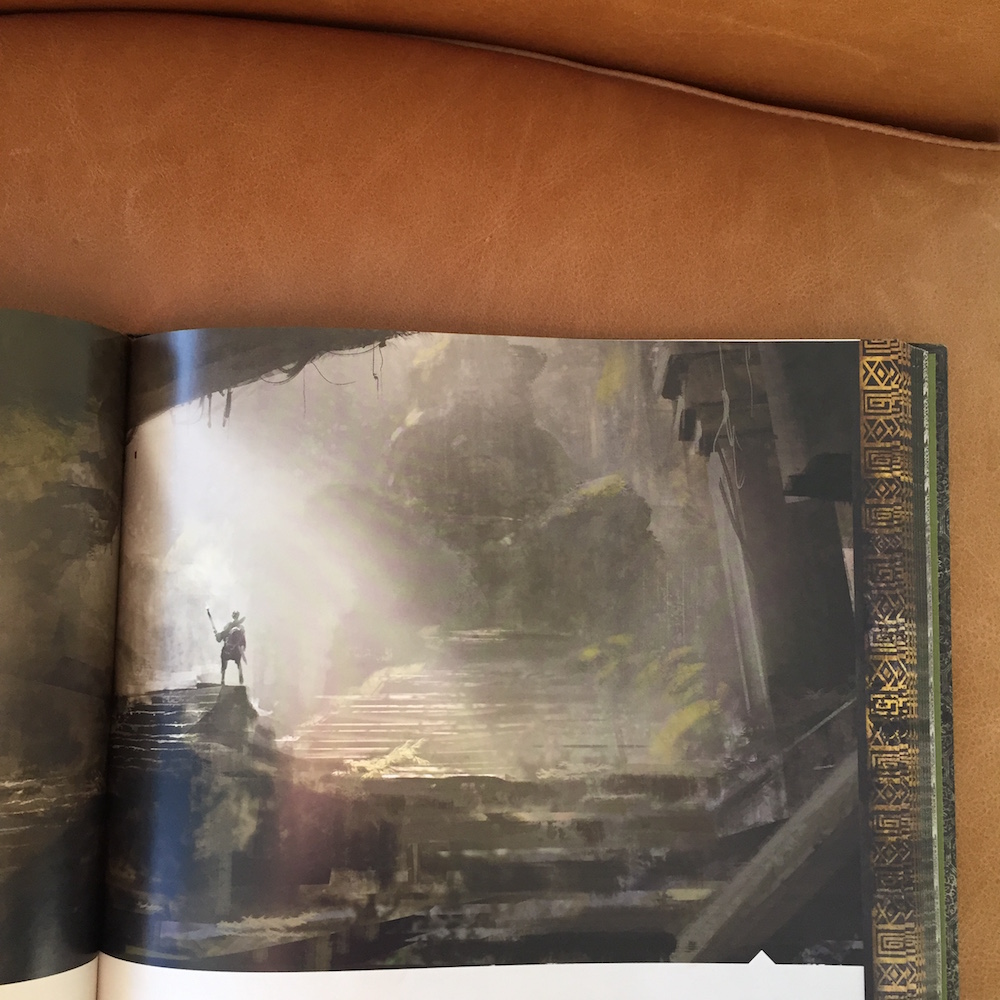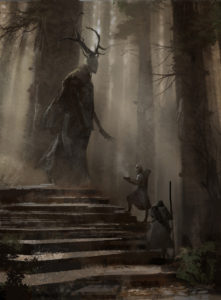The great war, the hungry hordes of the Dark Lords—a nightmare that lasted for two decades … Twenty-one years have passed since the Dark Lords were vanquished and the Queen realized that her realm was dying. She was forced to lead her people to safer grounds … [venturing north of the old world, over the mountains known as The Titans] … they encountered a small barbarian settlement …
(Symbaroum Core Rulebook, p. 16)
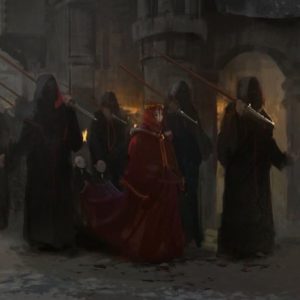
In my take on Symbaroum, the scene opens earlier than as presented in the text. Yndaros, the name of the new capital settlement, is little more than an armed camp, crouched in the shell of a looted barbarian valley fortress. The Queen struggles to maintain cohesion among her people following a near death march exile, adrift in an alien land, threatened by barbarian tribes, hostile elements, and the lingering corruption that was the doom of the previous grand empire Symbar, the ruins of which remain blanketed by the seemingly endless forests of Davokar. This is Ambria by way of Roanoke; the winters long and mist-shrouded horizons mysterious.
In lost Alberetor to the south, the old, ruined homeland, dark magic, incautious industry, and terrible engines of war blighted the land. Were the “Dark Lords” true paragons of evil, crept up from the abyss to feast on the corrupt souls of men, or convenient wartime propaganda to justify the horrors of war and a conclusion that ultimately stranded the victorious Queen and her exiled people in a verdant but perilous new land? The Ambrians are simultaneously explorers, colonists, conquerors, and refugees, hardened and made ruthless by war, Queen Korinthia an unburnt, masked Joan of Arc.
The uncrowned king of Ambria’s treasure-hunters, Lasifor Nightpitch, established the town of Thistle Hold … a safe haven for Ambrians exploring Davokar [the great, haunted forest] … full of natural resources and rich remnants of long lost civilizations … and … rampant abominations …
(Symbaroum Core Rulebook, p. 17)
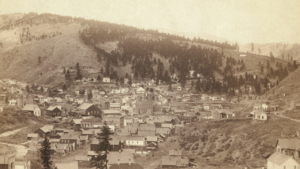
Here, Thistle Hold is a frontier boom town, a fantasy Deadwood with only a handful of muddy streets clustered around a beacon tower, the one building of any permanent aspect, all surrounded by wooden palisades and chevaux de frise, huge wooden and rusty iron stakes driven into the mud, angled outward against cavalry charges. Thistle Hold is as much barbarian trading post as colonial outpost and settlers have a deep ambivalence, torn between the untramelled freedom of the frontier, but also yearning and planning for the protection, certainty, and industry that would come from annexation by Yndaros and joining the young realm of Ambria.
When the Ambrians arrived in the region south of Davokar, thirteen barbarian clans were living in the area. … The barbarian High Chieftain, seated on Karvosti, is elected for life during a gathering at the Thingstead … not elected to rule. Instead the role of the High Chieftain is to arbitrate or, when necessary, act as a judge in conflicts within and between the clans, and only if requested to do so by the clan chieftains. …
(Symbaroum Core Rulebook, p. 27)
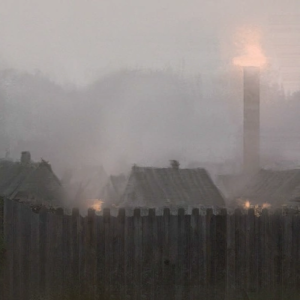
The barbarian clans believe themselves descendants of the lost empire Symbar. Though the Ambrians’ weapons and organized ways of war generally defeat clan warriors in direct conflict on the battlefield, the barbarians see the interlopers as opportunities just as much as a threats. One clan already, through alliance with the Queen’s soldiers, annihilated their blood rivals clan Jezora, driving the few remaining survivors into the uncharted taboo depths of Davokar. When the curtain rises on the campaign, there has been no High Chieftain for generations. Many barbarians see the newly arrived people from the south as a means to solidify or advance their position, toward the ambition of claiming the High Chieftainship, perhaps even founding a regime of New Symbar.


